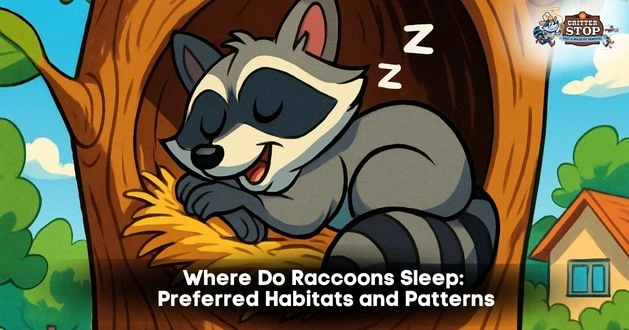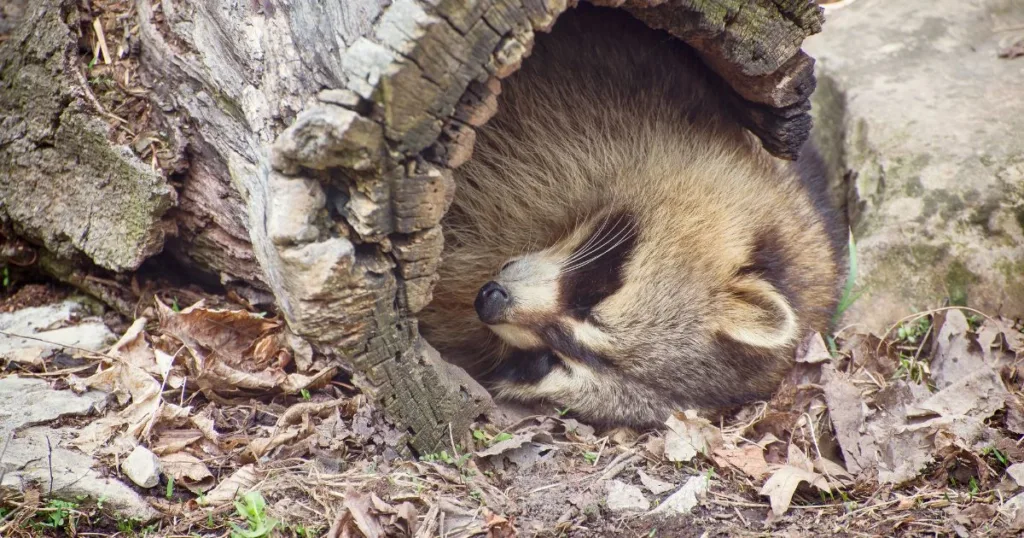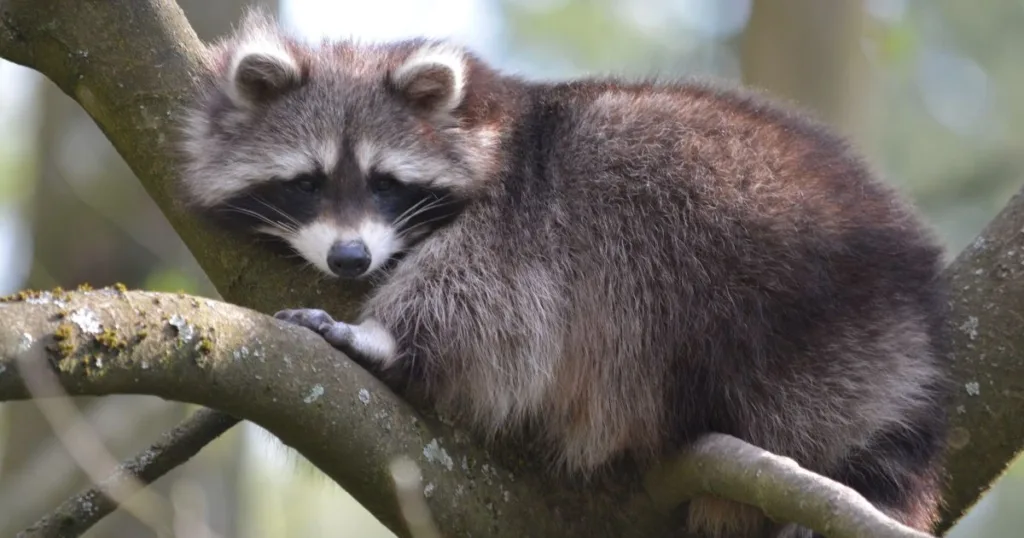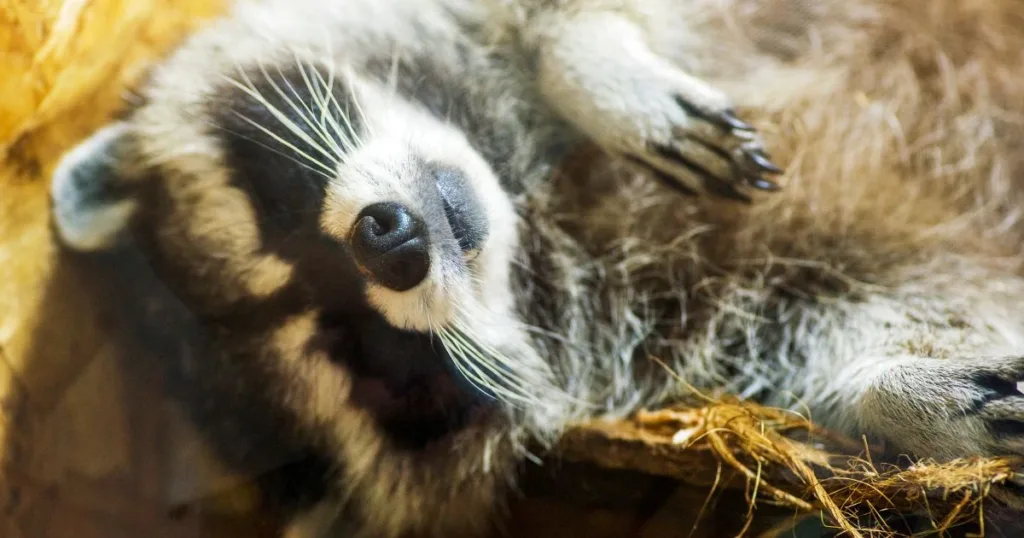
Where do raccoons sleep? Raccoons are nocturnal animals that need safe, sheltered places to rest during the day. You will often find raccoons sleeping in tree hollows, abandoned burrows, or in spaces like attics and chimneys if they live near humans. These locations protect from predators and the elements.
When you wonder where raccoons sleep in the wild, their choice depends on availability. They prefer quiet, hidden spots such as dense wooded areas, under fallen logs, or inside thick shrubs. In urban areas, raccoons adapt by using garages, sheds, and crawl spaces as cozy dens.
Understanding where raccoons sleep helps you identify their presence and avoid unwanted encounters. Their dens serve as crucial resting places, and understanding this can provide insight into their behavior and habitat needs.

Raccoons select sleeping sites based on safety, shelter, and proximity to food sources. Their resting places vary seasonally and between day and night to strike a balance between comfort and protection from predators.
You will find raccoons sleeping in tree hollows, abandoned burrows, or dense brush. Tree cavities offer elevated protection and insulation from weather, making them a top choice.
If tree holes aren't available, raccoons use ground dens, such as burrows dug by other animals or spaces under rocks and logs. They tend to line these dens with leaves or grass to stay warm. In urban areas, raccoons may also sleep in attics or chimneys.
During the day, raccoons sleep in secure dens to avoid predators, remaining inactive until nightfall. Their daytime sleeping spots are often dark and secluded to maximize safety.
At night, raccoons become active, searching for food. They rarely sleep in the open or exposed places after dark, preferring to rest mainly during daylight hours when they are vulnerable.
Your raccoons will adjust their sleeping habits based on the season. In colder months, they select dens with better insulation to conserve heat.
They may also reduce their activity and stay inside their dens for more extended periods during winter. In spring and summer, raccoons use multiple resting sites more frequently, moving between them based on food availability and safety needs.

Raccoons adjust their sleeping locations to the environment surrounding human populations. You’ll find they choose spots that provide safety, warmth, and easy access to food, often close to your home or community structures.
In urban and suburban areas, raccoons have adapted to living near humans by selecting sleeping spots that minimize their exposure to predators and harsh weather conditions. You might notice raccoons using attics, abandoned buildings, or dense vegetation near backyards.
They take advantage of human structures for shelter because these sites offer protection and stable temperatures. When natural dens like hollow trees aren’t available, raccoons rely on these alternative safe spaces.
Adaptation also means raccoons adjust their activity patterns. You might rarely see them during the day because they prefer to rest in hidden spots and become active after sunset, using these urban areas as a means to stay undisturbed.
You can often find raccoons sleeping in places like sheds, crawl spaces, and under decks. These areas provide shelter from the weather and predators while remaining close to food sources, such as garbage bins or pet food left outside.
They also nest in hollow trees or dense bushes near residential areas if available. Raccoons use insulation materials such as insulation foam, leaves, or old fabrics to line their sleeping spots, making them more comfortable.
If you have a chimney or vents, raccoons may enter these locations to create dens. Securing these access points can help prevent raccoons from making your home a sleeping site.

Raccoons often sleep in quiet, dark places like attics, crawl spaces, or chimneys. If you find signs of them in your home, act quickly to prevent damage and health risks. Blocking their access points is a practical first step.
Start by inspecting your property for holes or gaps larger than 2 inches in diameter. Use heavy-duty materials, such as steel mesh, to seal entries. Ensure that all food sources, such as pet food and trash, are stored securely to deter raccoons from staying.
You can also use natural deterrents like ammonia-soaked rags or commercial repellents around your home’s exterior. Be cautious: never seal entry points when raccoons are inside, as this can trap and harm them. Instead, wait until they leave at night.
Here’s a simple checklist to follow:
| Step | Action |
| Identify entry points | Inspect attic, roof, vents |
| Secure food sources | Store pet food indoors, lock trash |
| Seal openings | Use steel mesh, strong materials |
| Use deterrents | Apply repellents or ammonia rags |
| Monitor | Check regularly for new activity |
If you need help removing raccoons safely and permanently, it is recommended that you contact professionals. Critter Stop offers humane wildlife removal with expert inspections.
Critter Stop has earned a strong reputation and excellent customer reviews online. Their commitment to quality work and customer care makes them a reliable choice. Contact Critter Stop at (214) 234-2616 for a complimentary inspection to resolve your wildlife or pest issues.
Raccoons often choose locations that provide safety, shelter, and easy access to food. Their sleeping spots adapt to seasonal changes, urban environments, and threats from predators or human activities.
You will find raccoons nesting in attics, abandoned buildings, and sewers. They also use tree cavities and crawl spaces near human residences. These locations offer shelter and proximity to food sources.
During winter, raccoons seek out insulated dens, such as hollow trees or burrows. They reduce activity and may sleep for extended periods, but do not hibernate fully. Their dens protect them from cold and predators.
You can expect raccoons to rest in tree hollows, dense brush, or under decks. They favor quiet, hidden spots away from disturbances. These shelters offer concealment and comfort during daylight hours.
Human activity prompts raccoons to use more concealed or elevated areas, such as attics or chimneys. You might notice raccoons avoiding open areas during busy times. They are highly adaptable to urban noise and movement.
Raccoons generally vary their sleeping locations regularly to avoid predators. They may return to their favored dens, but rarely stay there permanently. This behavior increases their safety and flexibility.
You should consider coyotes, owls, and bobcats as the primary predators impacting den choice. Raccoons select spots that limit access for these animals. Their sleeping sites often feature good visibility or hard-to-reach entrances.
Visit our Critter Library and learn more about our furry friends